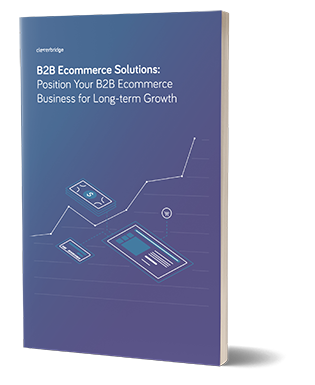The move from the traditional selling model to a more consumer-focused, customized experience has triggered a sea change regarding where the true value lies for your B2B business.
In days past, a company would sell a piece of technology en masse, requiring a much larger upfront cost from the consumer, as well as the burden of identifying exactly how best to use the product’s features and functionality. In this scenario, the goal is acquiring a high volume of sales. Once the consumer has signed on the dotted line, your sales team moves on to the next prospect.
As the software market continues to usher in a more subscription-focused business model – in which the value is not simply acquiring as many customers as possible, but rather selling more of your product to those you already have – the expansion of your product throughout your current customer base through a long-term, trusted relationship remains paramount for continued growth.
For example, if a single software license requires the full cost for your customer at the moment of purchase, the majority of your sales team’s work is done, with little else required of you. And the money is in your pocket regardless of the customer’s satisfaction.
But as more companies purchase on a month-to-month subscription basis, they’re likely willing to spend proportionately to the value that they’re seeing in any given paid period. And the decision to continue that subscription is contingent on the extent to which your product is meeting your customers’ business goals.
This requires a change in mindset on your company’s part, from a one-and-done sales process to a long-term partnership approach. The challenge here is that your limited team resources need to be expanded out to ensure continuous client communication and satisfaction, rather than a pound-the-pavement approach in finding new leads.
The upside, however, offers an opportunity for you to realize more revenue per client, through adding new seats to software configurations, upselling to new products, features and functionality, and selling value-added services.
Creating continued satisfaction for your clients increases the likelihood that they’ll stay with you for the long-haul, which supports churn reduction and long-term revenue growth.
Consider the Land-Adopt-Expand-Renew model, put forth by the Technology Services Industry Association (TSIA), which outlines each step in the process as well as the key role needed to successfully execute each one.
Land:
Land: “All sales and marketing activities required to land the first sale of a solution to a new customer, and the initial implementation of that solution.”
Role: Your sales team’s responsibility is to land the customer, without full responsibility to expand your product throughout the customer’s organization.
Adopt:
Adopt: “All activities involved in making sure the customer is successfully adopting and expanding their use of the solution.”
Role: Following the closing of a prospect into a customer, you should ensure that the product is implemented properly and that they’re using it effectively to their satisfaction. This can be accomplished by a customer success, education services or support services teams. These departments are also apt to aid in the renewal process.
Expand:

Expand: “All activities required to cost-effectively help current customers expand their spending as usage increases, including both cross-selling and upselling.”
Role: The customer success (or similar) team most responsible for the adoption phase – and therefore most entrenched in the customer relationship and most familiar with their organization – can leverage that relationship into product expansions and upsells. Sales and marketing can also be key players in the expansion phase by continously communicating new content, demos, add-ons, products, etc.
Renew:
Renew: “All activities required to ensure the customer renews their contract.”
Role: The customer success team can be an integral part of the renewal phase. TSIA also suggests deploying a dedicated renewal specialist when a contract is nearing its end date, who can own the value proposition of the product to continually address the problems and challenges of the customer.
As we’ve spoken about in a previous blog, renewing these contracts on an automated basis may free up your company’s resources, reduce churn (especially for lower-value contracts), and be far more convenient for the customer.
Learn how cleverbridge can help manage, monetize and optimize your digital business as you continue to grow. We take responsiblity for recurring billing, global payment processing, compliance, customer service, and more. Contact our sales team today.
Kyle Shamorian is the content marketer for cleverbridge. Connect with him on LinkedIn.